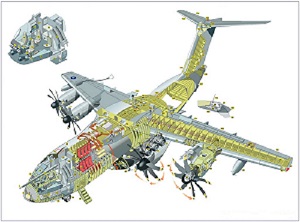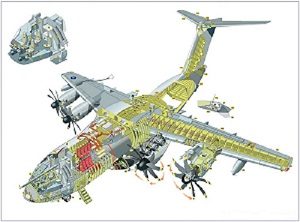What are the main Military Structural Materials?

With the development of modern science, the technology of weapon equipment is becoming more and more intensive and it is changing from mechanized war to information war. Therefore, higher and newer requirements have been put forward for military materials. Magnesium alloy As the lightest engineering metal material, magnesium alloys have a series of unique properties, such as light specific gravity, high specific strength and specific stiffness, good damping and thermal conductivity, strong electromagnetic shielding ability, and good vibration reduction, etc., which has greatly met the needs of aerospace, modern weaponry, and other military industries. Magnesium alloy has many applications in military equipment, such as tank seat frame, vehicle length mirror, gun length mirror, gearbox body, and engine filter seat; components of spacecraft and aircraft, such as fighters, bombers, helicopters, transport aircraft, airborne radar, ground-to-air missiles, carrier rockets, satellites, etc. The characteristics of magnesium alloy such as lightweight, good specific strength and rigidity, good vibration damping performance, strong electromagnetic interference, and shielding ability can meet the requirements of military industrial products for weight reduction, noise absorption, shock absorption, and radiation prevention. Magnesium alloys play a very important role in aerospace and defense construction, which are key structural materials for aircraft, satellites, missiles, fighter aircraft, and combat vehicles.

Aluminum alloy Aluminum alloy has been one of the most widely used metal structural materials in the military industry. Aluminum alloy material has the characteristics of low density, high strength, and good processing performance, and it can be made into various sections of profiles, pipes, high-gluten plates, etc. to give full play to the potential of the materials and improve the stiffness and strength of components. Therefore, aluminum alloy is the preferred lightweight structural material for weapons lightweight. The main aluminum alloys used in the military industry are aluminum-lithium alloy, aluminum-copper alloy, and aluminum zinc-magnesium alloy. The new aluminum-lithium alloy, used in the aviation industry, is expected to reduce aircraft weight by 8% to 15%, and it will also be a candidate structural material for space vehicles and thin-walled missile casings. With the rapid development of the aerospace industry, the research focus of aluminum-lithium alloy is still to solve the problem of poor toughness and cost reduction in the direction of thickness. Structural ceramics Common structural ceramic materials include alumina, lead oxide, silicon nitride, silicon carbide, aluminum nitride, and its composite materials. As structural ceramic materials are usually characterized by high strength, high hardness, high-temperature resistance, corrosion resistance, and wear resistance, they are widely used in national defense and military industry. Ceramic material is a high-tech material with rapid development in the world, and it has developed from single-phase ceramic to multiphase composite ceramic. Due to its high-temperature resistance, low density, wear resistance, and low thermal expansion coefficient, structural ceramic materials have good application prospects in the military industry. Please visit http://www.samaterials.com for more information.
{{item.content}}
LEVE A REPLY
{{item.children[0].content}}
{{item.content}}






